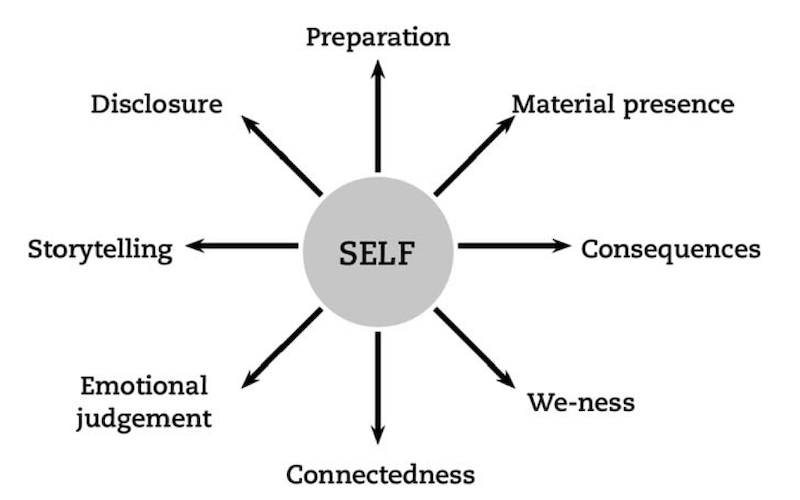
Among the Anlo-Ewe people of Ghana we find an understanding of sensation – not dissimilar to the notion Gemeingefuhl. ‘Seselelame’ translates as perceive-perceive-at-flesh-inside and is a generalised feeling in the body which consists of a wide array of senses – including proprioception, external senses, emotions, cognition, and intuition. Seselelame expresses an order of sensory integration consistent with emergent perspectives on interoception, and also includes within it Sherrington’s schema and the Western model of the five-senses.
Seselelame and homeostasis share an interesting parallel. Both seselelame and homeostasis connect sensation with action, for example hearing and vocalisation, balance and equilibrium, kinaesthesia and movement, vision and seeing, tasting and eating.
Proprioception is experienced by the Anlo-Ewe as part of seselelame. It is also inherently intersubjective and based on shared feelings. For the Anlo-Ewe people perceiving their own bodies requires paying attention to the bodies of those around them – this sensory ecology and continuity is consistent with the MESHWORK approach to Integrated Embodiment – we are embedded in our material (body and environment) and sociocultural surrounds.
The notion of Gemeingefuhl has re-emerged in neurobiology over the last 20 years. During this period it has been established that both thermoreception and nociception report not on external objects but on the physiological condition of innervated tissue. This is the case for all small diameter sensory input (free-nerve endings) arising from the entire body – including viscera, muscles, joints, teeth and skin. We would add to this list the extensive network of mechanoreceptors in fascia.
In this new conceptual framework, nociception, thermoreception and mechanoreception are sources of interoception, not exteroception.
This extensive small diameter sensory input, from the entire body, informs homeostasis by generating and perpetually updating our ‘sense of the physiological condition of the body’ (Bud Craig). This sense also produces distinct homeostatic emotions which prompt specific responses in support of homeostasis. Homeostatic emotions, to which many of us are completely oblivious (or even wilfully dismissive), perfuse both our material and psycho-emotional sense of self.
From the perspective of Integrated Embodiment interoception and proprioception are architecturally and functionally interconnected because they share common connective tissue networks. All motion and movement generates – interoceptive and proprioceptive sensation that is cortically integrated to produce a coherent and comprehensive sense of the body. Both streams of sensation, in spite of being processed in different parts of the brain, mutually inform our experience of embodiment.
FEATURED IMAGE:
J. Jude. Seselelame: feelings in the body: working alongside systemic ideas (2015).
